Various shapes of kofun
Various shapes of kofun
Kofun come in various shapes and sizes. This variation in shape and size is one of the distinctive characteristics of the Mozu-Furuichi Kofun Group. Another distinctive characteristic of the Mozu-Furuichi Kofun Group is the significant concentration of large-scale keyhole-shaped kofun.
Keyhole-shaped kofun (zempo-koen-fun)
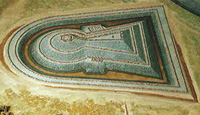
-
These are shaped like a keyhole when seen from above, as if a round mound and a square mound have been joined together. A classic example is Nintoku-tenno-ryo Kofun, the largest kofun in Japan.
Most colossal kofun adopt this keyhole shape. They were constructed continuously from the beginning to nearly the end of the Kofun period. Tombs of this kind are unique to Japan, but no one knows for certain why they were made in such a shape.
Scallop shell-shaped kofun (hotategai-gata-fun)
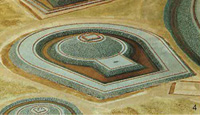
-
This is a kind of keyhole-shaped kofun, with the square front part shortened. Tombs of this shape were mainly constructed in the Middle Kofun period.
One theory is that the shape arose when the sovereign prohibited the addition of square front parts, as seen in keyhole-shaped kofun.
Round kofun (empun)
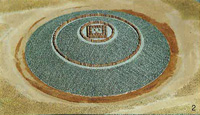
- This is the most common shape in Japan.
Square kofun (hofun)
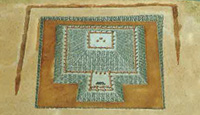
- The tombs of this shape were constructed throughout the Kofun period. The tombs of sovereigns changed to this square shape in the second half of the Kofun period (from the end of the 6th century).
 How many kofun are there in Japan?
How many kofun are there in Japan?
There are about 200,000 kofun spread over the two main islands of the Japanese archipelago, Honshu and Kyushu. Of these, keyhole-shaped kofun account for around 4,700.
 Comparing the world's largest tombs
Comparing the world's largest tombs
- Nintoku-tenno-ryo Kofun is the largest kofun in Japan and one of the largest burial mounds in the world. Its sheer scale becomes clear if we compare it with the Pyramid of Cheops in Egypt and the Mausoleum of the First Qin Emperor in China.
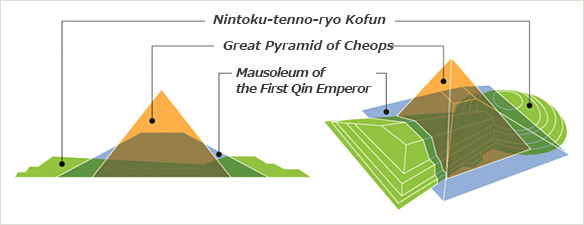
-
Nintoku-tenno-ryo
KofunGreat Pyramid of
CheopsMausoleum of
the First Qin EmperorLength 486 m 230 m 350 m Height 35.8 m 146 m 76 m Volume 1,400,000 m³ 2,600,000 m³ 3,000,000 m³ 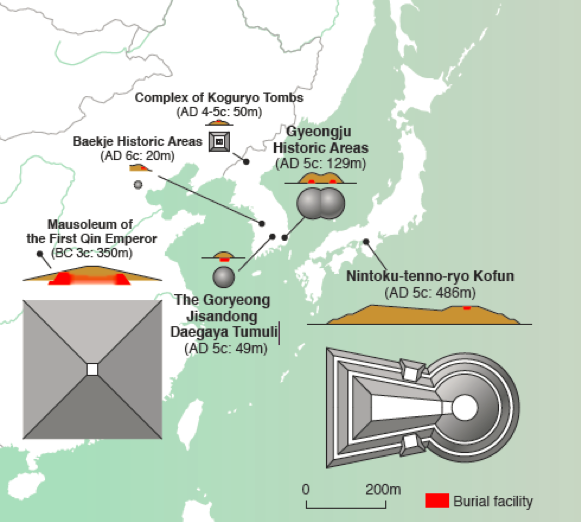
※Please swipe the table to see more.
*All figures are approximate.
 How much labor was needed to build a kofun?
How much labor was needed to build a kofun?
In 1985, a Project Team from Obayashi Corporation made a test calculation based on Nintoku-tenno-ryo Kofun. They found that, if current construction methods and various machines were used, the construction would have taken about two and a half years using 60 workers per day (a total of 54,750 man-days). In the Kofun period, however, when there were no machines, it would have required 6,807,000 man-days, and even if up to 2,000 workers were used every day, it would have taken 15 years and 8 months.
(1985 Obayashi Corporation Project Team "Obayashi Quarterly," No. 20 MAUSOLEUM)
This serves to show the scale of the civil engineering work involved in building a kofun. It also suggests that kofun were built by powerful individuals of sufficient status to mobilize such a large workforce.


